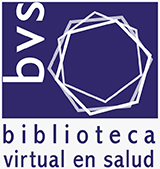FAMILY PRESENCE DURING CARDIOPULMONARY RESUSCITATION: THE LOOK OF NURSES AND FAMILY
Keywords:
Cardiopulmonary resuscitation, prehospital care, family, family presenceAbstract
From questioning about how the delivery of care to critically ill patients and their families and how the nurse rescuer confronts CPR accompanied by relatives, this study aimed to describe the meaning that witness the resuscitation of loved relatives has for the family as well as for nurses doing resuscitation in the presence of family. It also relate family socio-demographic characteristics and nurses as well, with the family presence assessment during pre-hospital cardiopulmonary resuscitation setting. Exploratory study with mixed qualitative and quantitative approach, using symbolic interactionism as theoretical guidance. Relatives that witnessed resuscitation of their loved ones at home with rescuers nurses working in Bío-Bío advanced Mobile Emergency Care Service (SAMU), participated in interviews and answering to a familiar presence tool. Results indicate that both families and nurses appreciate the family presence as beneficial and in relation to socio-demographic and family presence, although there are differences, the older nurses who valued family presence as less beneficial than younger ones, turned out to be the only statistically significant difference. On the other hand, results allow to identify major themes that emerged from the analysis of narratives from relatives (shocking experience, symbolic communication and comforting experience) and nurses (unsafe practice, empathic and practical experience that is required), which contribute to strengthen humanization of critical patient care, appreciate the National hospital program as friend based and substantiate the need to develop protocols that improve health quality.
Downloads
Published
How to Cite
Issue
Section
Copyright (c) 2012 Universidad de Concepción

This work is licensed under a Creative Commons Attribution 4.0 International License.












